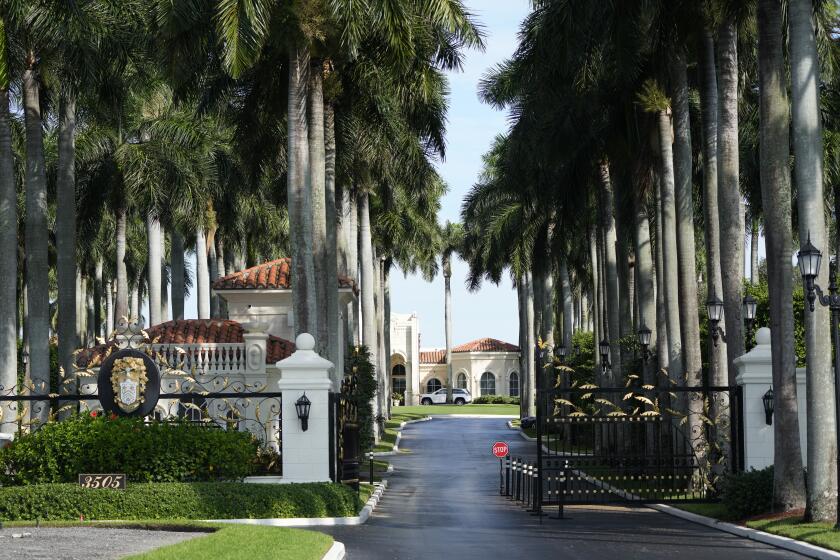Evidence of a Supreme Court bias
If confirmed as a Supreme Court justice, Elena Kagan will bring greater diversity to the court by adding a third woman. What she will not bring is educational diversity. Her confirmation will leave the court entirely composed of former law students at either Harvard or Yale.
The decision of President Obama to select a nominee from one of these two schools is particularly disappointing as a replacement for Justice John Paul Stevens — an iconic figure on the court who was also its only graduate from an alternative institution (Northwestern). Kagan will join fellow Harvard graduates Chief Justice John G. Roberts Jr. and Associate Justices Antonin Scalia, Stephen G. Breyer and Anthony M. Kennedy. This leaves three justices from Yale (Clarence Thomas, Samuel A. Alito Jr. and Sonia Sotomayor). Associate Justice Ruth Bader Ginsburg also attended Harvard but graduated from Columbia.
Why should we care? When you virtually exclude all but two of the nation’s 160 law schools as sources for justices, it not only reduces the number of outstanding candidates but guarantees a certain insularity in training and influences on the court. This bias is not only elitist but decidedly anti-intellectual. Moreover, there is no objective basis for favoring these two schools. Annual rankings from law schools on publication or reputation or student scores show relatively small differences in the top 20 law schools. The actual scores of the small pool of students in the top tier vary by only a few points. While Harvard and Yale are routinely ranked in the top spots, the faculties and student bodies are not viewed as manifestly superior to such competitors as Stanford, Chicago, Michigan or other top schools.
If Obama had looked more broadly at outstanding graduates from other schools, he might have found someone with more professional experience, a more extensive writing record or some actual experience in the judiciary. What Kagan had was a Harvard connection and one of the most powerful legal cartels behind her. When challenged on this obvious bias in favor of two schools, leaders usually insist that it is just coincidence. Ironically, the federal government has long rejected the claims of businesses that insist their failure to hire from certain groups, such as women or minorities, is unintentional.
The United States leads the world in legal education, but you would not know that from the roster of justices. Obama preferred Kagan, for example, over such potential choices as U.S. 7th Circuit Judge Diane Wood, who is generally viewed as one of the most brilliant minds on the federal bench and who has a lengthy record of both opinions and legal writing. She also graduated from the University of Texas. There are dozens of such jurists and lawyers who are leaders in their fields from different geographic and educational backgrounds.
Elitism on the court is open and raw. For those not familiar with it, consider Scalia’s recent remarks to a student at American University’s Law School. He said that she should not expect to be considered for a Supreme Court clerkship given the school she attended. Scalia explained: “By and large, I’m going to be picking from the law schools that basically are the hardest to get into. They admit the best and the brightest … and if they come in the best and the brightest, they’re probably going to leave the best and the brightest, OK?” Many in the audience were not happy, but at least Scalia was being honest about the raging elitism at the Supreme Court. It is, of course, ridiculous to suggest that the top student at American is not competitive with the top students from Harvard. However, this prejudice against non-elite schools is perpetuated by justices like Scalia who rarely look beyond the top five schools for clerks.
Nominations like Kagan’s are the result of a network of graduates who work consciously or unconsciously to see that their own are nominated. Notably, after Kagan’s nomination, powerful figures from her Harvard years came forward to vouch for her abilities. Their message was the same: Despite her lack of a record, she is known in our circle as a real winner. She is, in a phrase, one of us. Indeed, reporters breathlessly reported how Kagan and Scalia are good friends and how she knows many of the main players from Harvard, as if it is the judicial equivalent to having graduated from the Hogwarts School of Witchcraft and Wizardry.
The favoritism shown Harvard and Yale should be viewed not just as incestuous but as scandalous. It undermines educational institutions across the country by maintaining a clearly arbitrary and capricious basis for selection. It also runs against the grain of a nation based on meritocracy and opportunity.
If there is one place in the world that should be free of such baseless bias, it is the Supreme Court of the United States. But that would require looking a bit west and south from the banks of the Charles River.
Jonathan Turley is a professor of law at George Washington University, where he teaches a course on the Supreme Court.
More to Read
Get the L.A. Times Politics newsletter
Deeply reported insights into legislation, politics and policy from Sacramento, Washington and beyond. In your inbox three times per week.
You may occasionally receive promotional content from the Los Angeles Times.










